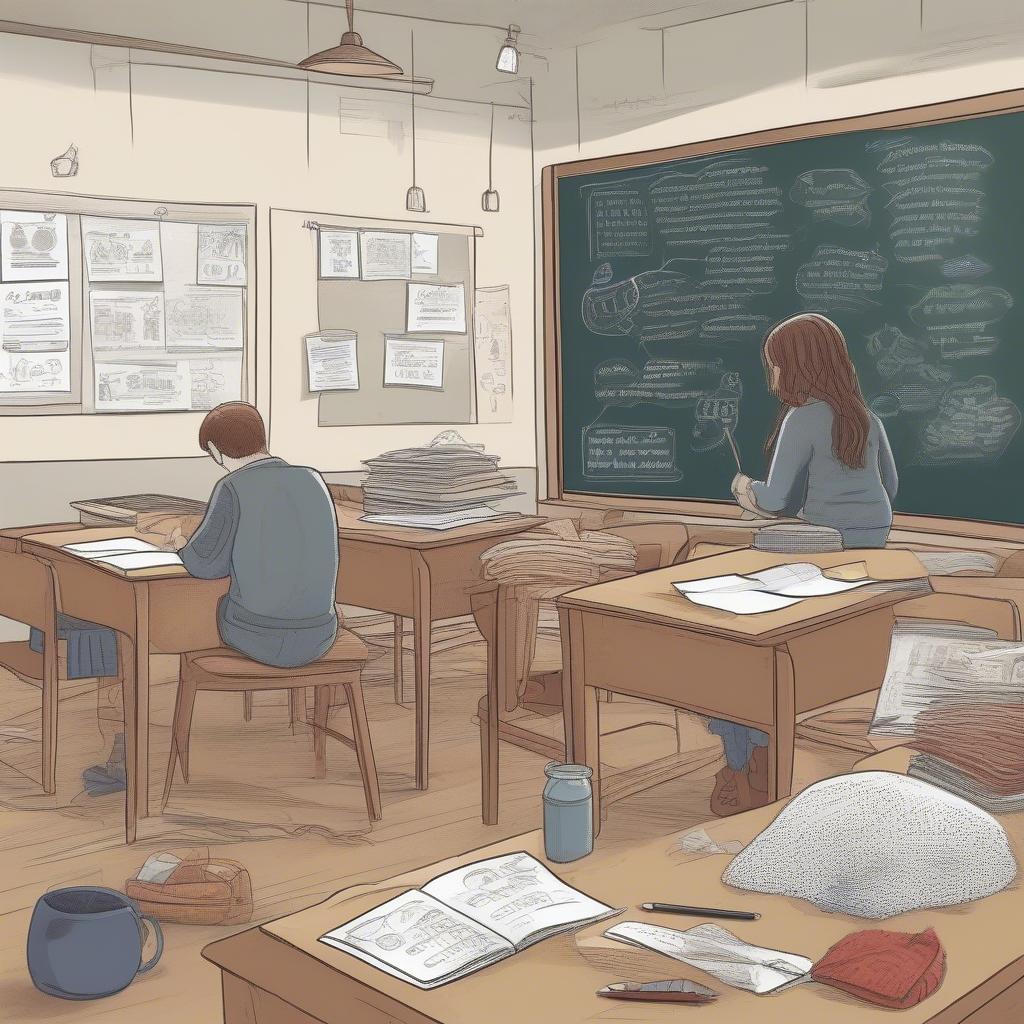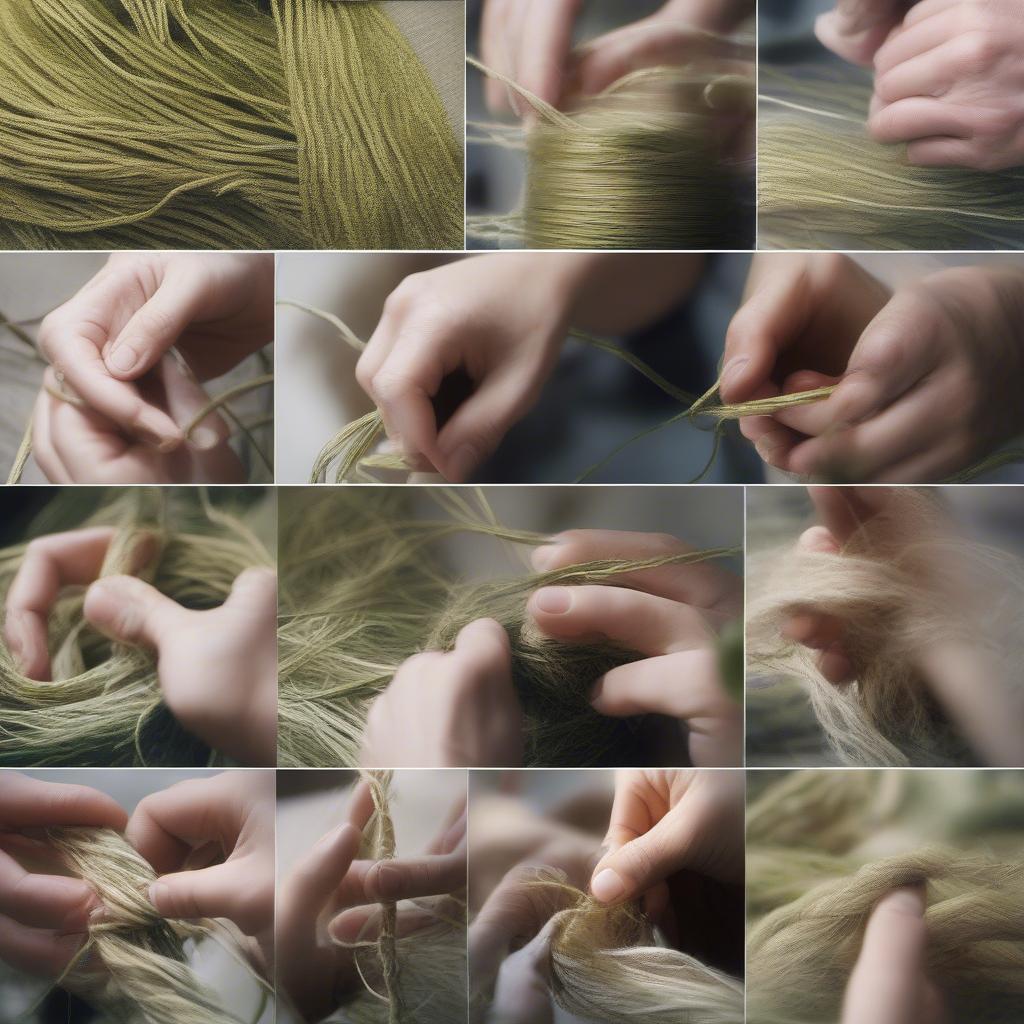Basket Weaving
Decoding the Basket Weaving Meme
The “Basket Weaving Meme” has become a popular way to poke fun at seemingly useless or easy college courses. But beyond the humor, there’s a rich history and surprising depth to the craft of basket weaving. This article dives into the origins of the meme, explores the actual skill involved in basketry, and examines its unexpected connections to various aspects of culture and technology.  Basket Weaving Meme Origins: A humorous depiction of the stereotypical "useless" college course, often contrasted with more challenging subjects.
Basket Weaving Meme Origins: A humorous depiction of the stereotypical "useless" college course, often contrasted with more challenging subjects.
From Practical Skill to Punchline: How the Basket Weaving Meme Emerged
The “basket weaving” meme stems from the perception of basketry as a simple, almost effortless activity. This view likely arose during the mid-20th century as universities expanded their course offerings to include more electives. Basket weaving, often associated with traditional crafts and rural life, was sometimes seen as less academically rigorous than other subjects. This contrast led to the humorous exaggeration of its simplicity, eventually solidifying its place in popular culture as a symbol of an easy course.
What the meme often overlooks is the intricate skill and knowledge required for true basketry. From selecting appropriate materials and preparing them to mastering various weaving techniques and understanding structural principles, basket making is far from a mindless activity. It’s a testament to human ingenuity and creativity, with a history stretching back millennia.
Beyond the Meme: The Art and Science of Basket Weaving
Basket weaving is a complex craft that demands both artistic vision and technical proficiency.  Intricate Basket Weaving Techniques: Close-up shots of various basket weaving techniques, showcasing the complexity and skill involved. Different cultures have developed unique basketry traditions, each reflecting their environment, materials, and aesthetic sensibilities. Consider the intricate coiled baskets of Native American tribes, the sturdy wicker baskets used in European agriculture, or the delicate bamboo baskets of East Asia. These diverse forms demonstrate the adaptability and versatility of this ancient craft.
Intricate Basket Weaving Techniques: Close-up shots of various basket weaving techniques, showcasing the complexity and skill involved. Different cultures have developed unique basketry traditions, each reflecting their environment, materials, and aesthetic sensibilities. Consider the intricate coiled baskets of Native American tribes, the sturdy wicker baskets used in European agriculture, or the delicate bamboo baskets of East Asia. These diverse forms demonstrate the adaptability and versatility of this ancient craft.
Furthermore, basket weaving principles have found applications in unexpected fields like engineering and architecture. The structural integrity of woven forms has inspired innovative building techniques and the design of lightweight yet strong materials. This cross-disciplinary influence highlights the underlying mathematical and scientific principles inherent in basketry, further debunking the notion of it being a simple pastime.
Why is Basket Weaving Still Relevant?
Despite the “easy A” stereotype perpetuated by the meme, basket weaving continues to be a valuable skill and art form. From creating functional objects for everyday use to producing stunning works of art, basketry offers a tangible connection to both nature and tradition. dale gribble basket weaving meme offers a humorous take on this. Learning to weave a basket can be a meditative and rewarding experience, fostering creativity, problem-solving skills, and an appreciation for handcrafted objects.
Basket Weaving in the Digital Age
The internet and social media have ironically given new life to the basket weaving meme. It’s frequently used in online discussions about education, work-life balance, and the perceived value of different skills. underwater basket weaving meme highlights this. However, these platforms also provide opportunities for basket makers to connect, share their work, and educate a wider audience about their craft. Online tutorials, forums, and marketplaces are helping to preserve and promote the art of basket weaving in the digital age.
What are the different types of basket weaving?
There are numerous basket weaving techniques, each with its own distinct characteristics and challenges. Some common types include:
- Coiling: A technique where a foundation material is spiraled upwards and stitched together.
- Twining: A method where two or more flexible weavers are twisted around a rigid framework.
- Plaiting: Similar to braiding, plaiting involves interlacing strands in a regular over-under pattern.
- Wickerwork: A type of weaving that uses flexible materials like willow or rattan.
Conclusion
The “basket weaving meme” may be a humorous internet phenomenon, but it obscures the true depth and value of this ancient craft. From its practical applications to its artistic expressions, basket weaving represents a rich tapestry of human ingenuity and cultural heritage. So, the next time you encounter the meme, remember the skill and creativity it often overlooks. underwater basket weaving memre. Embracing the art of basket weaving can be a rewarding and enriching experience, connecting us to a tradition that spans across cultures and time. using meme arrows basket weaving.
FAQ
- Is basket weaving difficult to learn? Like any craft, it requires practice and patience, but the basics are accessible to anyone.
- What materials are used in basket weaving? A wide variety of materials can be used, including reeds, willow, bamboo, grasses, and even recycled materials.
- Where can I learn basket weaving? Many community centers, craft schools, and online resources offer basket weaving classes and tutorials.
“Basket weaving, while often trivialized, embodies a deep connection to nature and human creativity. It’s a tangible expression of our ability to transform simple materials into functional and beautiful objects.” – Anya Petrova, Master Basket Weaver
“The resurgence of interest in traditional crafts like basket weaving reflects a growing desire for authentic, handcrafted objects in our increasingly digital world.” – James O’Malley, Cultural Anthropologist basket weaving forum meme.
Common situations with basket weaving questions might involve people looking for resources to learn, wanting to identify a specific weaving technique, or seeking information on the cultural significance of certain basket types.
You might also be interested in reading about the history of basket weaving, exploring different weaving patterns, or discovering contemporary basket artists.
For further assistance, please contact us at Hanoi, Vietnam or Tech Avenue, Suite 12, San Francisco, CA 94105, USA. Our customer service team is available 24/7.
